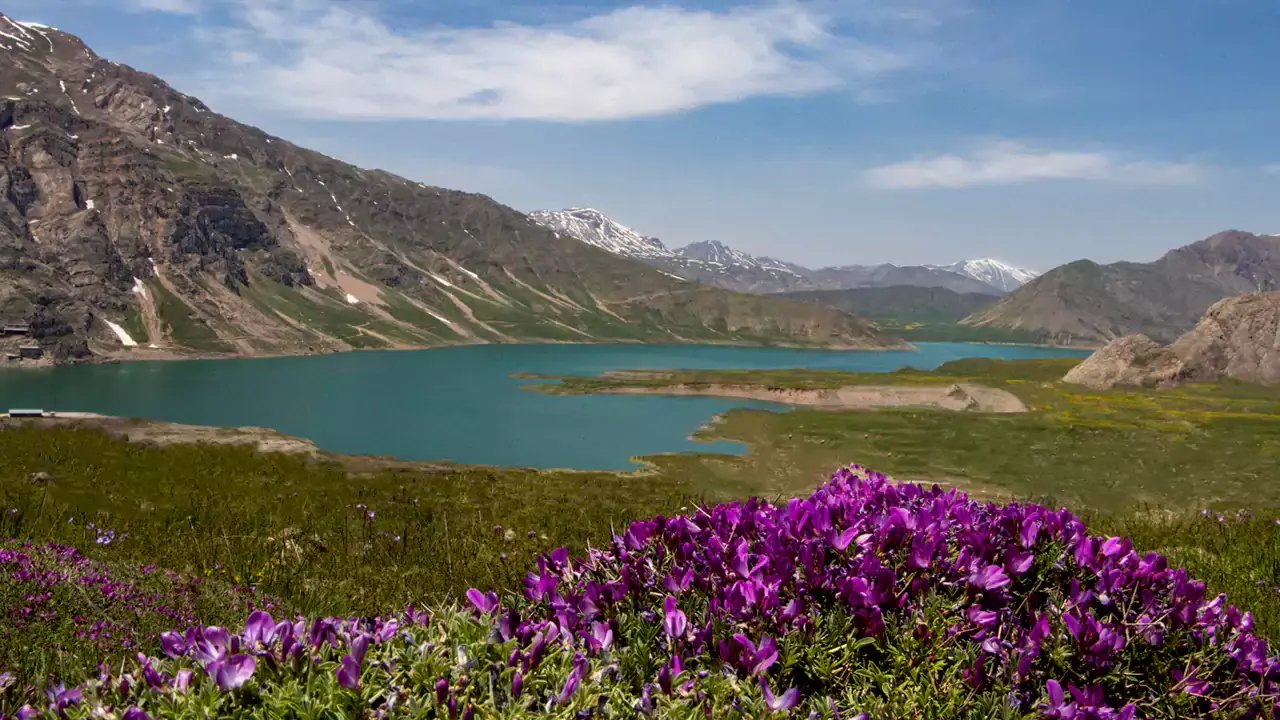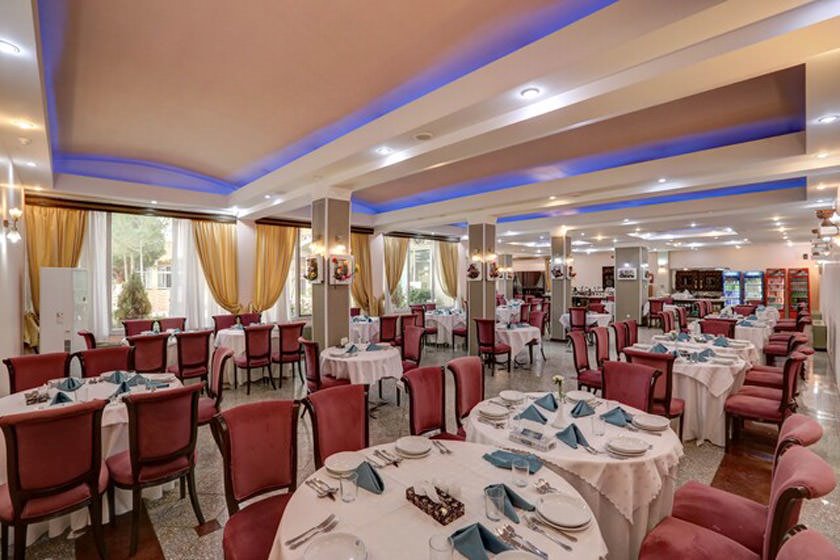Driving in Iran as a tourist offers both excitement and challenges. While it provides the freedom to explore the country at your own pace, it’s important to be prepared for the unique road conditions and local driving culture. Iran’s diverse landscapes, from bustling cities to vast deserts and mountain roads, make driving a fascinating way to experience the country. However, navigating its roads requires awareness of local traffic rules, road signs, and driving habits. Whether you’re traveling through Tehran’s heavy traffic or cruising down the open highways, understanding what to expect can help you stay safe and make the most of your time on the road. This guide provides a realistic look at driving in Iran, offering tips on safety, car rentals, road conditions, and more, ensuring you’re well-equipped for a smooth driving experience.
Is It Safe to Drive in Iran as a Tourist?
Driving in Iran is possible for tourists, and many travelers enjoy the freedom it gives. However, safety depends on how well you understand the roads, traffic rules, and driving culture. Big cities like Tehran and Mashhad have heavy traffic, especially during rush hours, and drivers often move fast, switch lanes suddenly, or ignore signs. It may look chaotic at first, but most local drivers know how to navigate this system. If you’re used to driving in busy countries, you may be able to adjust quickly. In smaller towns and rural areas, traffic is calmer and roads are usually in good condition, especially major highways connecting cities.

It’s important to stay alert at all times. Expect motorbikes to pass you from either side, even on highways. Some local drivers do not always use turn signals, and pedestrian crossings are often ignored. Road signs are in Persian, but most also have English translations, especially on highways. Emergency services exist, but response times can vary, especially outside major cities. If you’re a confident driver and stay careful, driving in Iran can be manageable. If you’re unsure, it’s better to travel with a local driver.
If you’re still undecided about how to get around in Iran, check out the article “Car Rental vs. Public Transport in Iran: Which One is Better for You?.” This article compares the benefits of renting a car and using public transport, helping you make a more informed decision.
Can You Drive in Iran with an International Driving Permit?
If you’re a tourist and want to drive in Iran, you must bring your International Driving Permit (IDP) along with your valid driver’s license from your home country. The IDP is required by law and should be issued in your country before your trip. Iran accepts IDPs based on the 1949 or 1968 conventions, and you’ll need both the IDP and your original license when driving or renting a car. Without these, you may not be allowed to drive legally or rent a vehicle.
You do not need to apply for a local Iranian license if you are a short-term visitor. Your IDP is usually valid for 6 months in Iran, depending on your visa. Be sure to carry these documents with you at all times when driving, because police may stop you for checks, especially on intercity roads. If your documents are in order, the process is usually smooth. Always check your IDP’s expiry date and make sure it includes a photo and translation in multiple languages, including English and French.
Some travelers prefer to explore Iran with their own car. If you’re one of them, the article “Traveling Through Iran with Your Own Car” provides helpful tips on how to prepare for your journey and what to expect on Iran’s roads.
Is It a Good Idea to Drive a Car While Traveling in Iran?
Driving in Iran can be a great option if you want to travel at your own pace and explore beyond the popular tourist spots. With your own car, you can stop in small villages, visit hidden natural spots, or take scenic roads that buses don’t go through. Iran is a large country with very diverse landscapes, and many areas are best explored by road. Renting a car gives you freedom and flexibility—no need to follow bus or train schedules, and you can choose your own route. Gasoline is also very cheap compared to most countries, which makes long-distance travel more affordable.
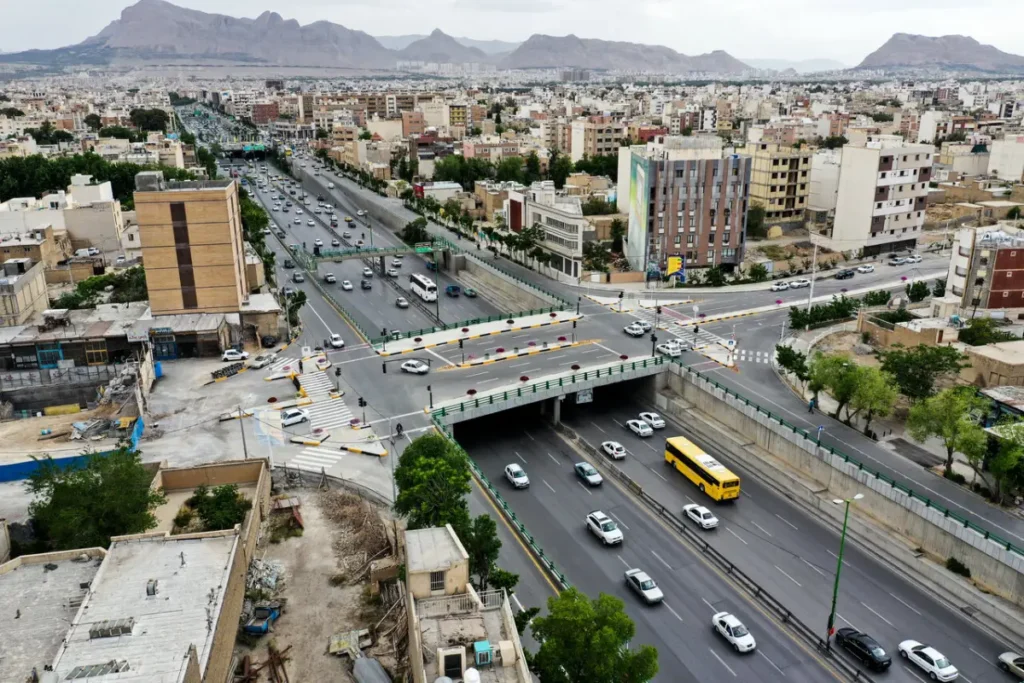
But you should know that driving in Iran is not always easy. Traffic in major cities can be chaotic, and many local drivers don’t follow the rules closely. If you’re not used to unpredictable driving or busy roads, it may feel stressful. Also, Iran is a large country, and driving long distances takes time. Road signs are usually in both Persian and English, but GPS apps like Google Maps or Waze don’t always give the best directions here. If you feel unsure, it’s much easier to hire a car with a local driver. That way, you still get the flexibility of car travel, but without the stress of driving yourself.
Here are the main points to help you decide:
- Advantages of driving in Iran:
- Flexibility to travel at your own pace
- Access to remote areas and natural attractions
- Fuel is cheap
- Good roads between most cities
- Challenges to keep in mind:
- Busy and unpredictable traffic in cities
- Local driving habits may feel fast or careless
- Long distances between major cities
If you’re confident behind the wheel and have time for a road trip, renting a car could be a great experience. But if you want a more relaxed trip, consider hiring a car with a local driver, many tourists choose this for comfort and safety.
If you’re ready to rent a car in Iran, the article “A Step-by-Step Guide to Renting a Car in Iran” breaks down each step of the car rental process for international tourists in a simple and clear way.
Renting a Car in Iran: What You Should Know Before You Book
Renting a car in Iran is simple for tourists, but there are some important points to know. Most car rental companies are located in major cities and airports, such as Imam Khomeini International Airport in Tehran. You’ll need your passport, visa, International Driving Permit, and original license. Some companies may also ask for a deposit in cash or through a tourist debit card. In general, you must be at least 18 years old. Automatic cars are available, but manual ones are more common.
Most cars for rent are in good condition and come with basic insurance. If you want more coverage, ask for full insurance before signing the papers. Rental prices vary depending on the car model, but small economy cars are usually more affordable and easier to handle in traffic. Petrol is cheap compared to most countries, which makes renting a car a budget-friendly option. Keep in mind that GPS may not always work perfectly in remote areas, so it’s better to download offline maps before your trip or use local navigation apps like Neshan or Balad with a local SIM card.
For those flying into Iran, you might want to rent a car straight from the airport. Our guide, “Airport Car Rental in Iran: A Simple Guide for International Tourists,” explains everything you need to know about this process and makes your travel experience smoother.
Road Conditions and Traffic in Iran’s Major Cities and Highways
Iran has a wide network of roads, and many of them are in good condition, especially highways between big cities like Tehran, Isfahan, Shiraz, and Yazd. These highways are often four-lane roads with regular gas stations and rest areas. You can also find toll roads that are better maintained and less crowded. However, some rural roads or mountain routes may have sharp turns, narrow paths, or limited lighting at night. It’s better to avoid driving in these areas after sunset.
Inside cities, traffic can be very heavy, especially in Tehran. Roads may be crowded, and parking is often difficult to find. It’s common to see cars parked along sidewalks or double-parked. You may need to use paid parking lots in central areas. While most roads are marked clearly, sudden turns, one-way streets, and unannounced construction zones are common. Driving in Iran’s cities requires attention and patience. If you’re planning to drive long distances between cities, the highways are much easier to manage.
The Main Driving Rules in Iran
If you plan to drive in Iran, you should know that cars drive on the right side of the road, and overtaking is usually done on the left. You must be at least 18 years old to drive. It’s also mandatory for everyone in the car to wear a seatbelt, not just the driver.
Drinking alcohol and driving is completely illegal in Iran. The legal blood alcohol level is zero, and police officers have the right to test you for alcohol or drugs at any time. If you break this rule, you can face serious trouble.
Mobile phone use is also banned while driving, unless you are using a hands-free device. Eating or drinking while driving is also not allowed. These rules are in place for your safety and the safety of others.
Driving in Iran can be different from what you’re used to. Some local drivers may not fully respect the rules, so you always need to stay focused and alert. But don’t worry—if you follow the rules, you can have a safe and enjoyable experience.
Driving Rules on Iranian Highways and Expressways
When driving on highways and expressways in Iran, it’s essential to keep a few things in mind:
- Road Signs and Speed Limits: Speed limits are clearly posted, and it’s important to follow them. Typically, the speed limit on highways is 120 km/h, while in city areas, it’s lower. Pay attention to signs indicating any changes.
- Lane Discipline: Stay in your lane and follow road markings. Highways and expressways are designed for fast travel, so lane discipline is crucial for safety.
- Overtaking: Overtaking is permitted, but always make sure it’s safe to do so. Use your indicator and make sure you have enough space.
- Parking: Parking is generally not allowed on highways, except in designated rest areas. If you need to stop, use these designated places for a break.
- Emergency Situations: In case of a breakdown or emergency, move your car off the road if possible. Use your hazard lights to alert other drivers, and place a warning triangle behind your car.
- Traffic Flow: Follow the flow of traffic, as expressways can become congested during peak hours. Keep a safe distance from other vehicles.
By following these simple rules, you can ensure a smooth and safe journey while driving on Iranian highways and expressways.
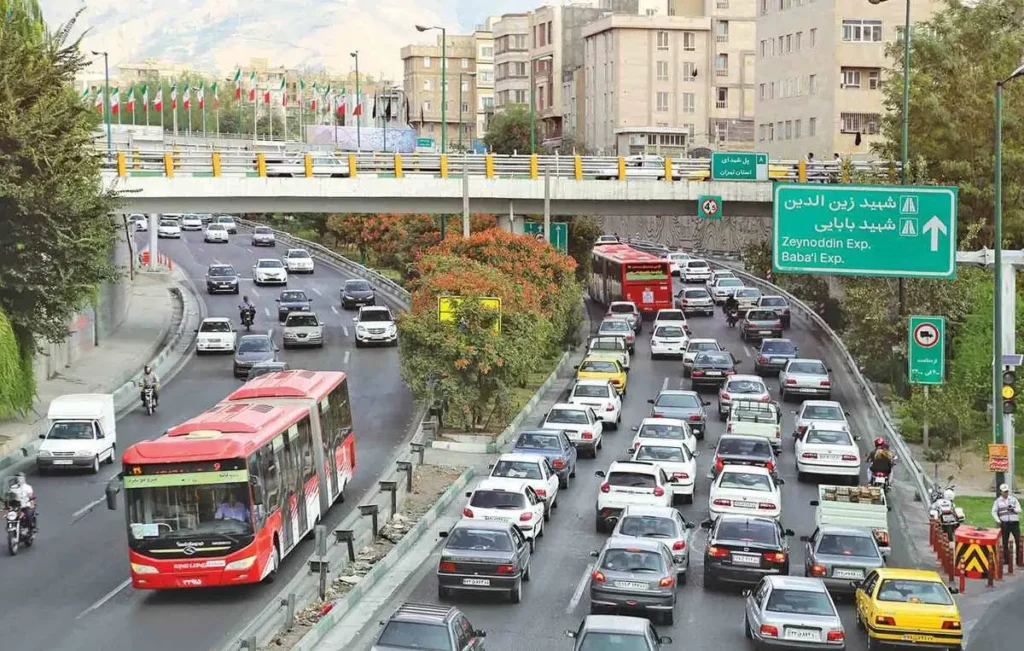
Local Road Culture in Iran: What You Should Expect
Driving in Iran comes with its own unique set of local customs that you may not be used to, but understanding them will help you feel more comfortable behind the wheel.
- Non-Traditional Communication: Unlike many other countries where drivers rely heavily on turn signals, in Iran, you’ll often see drivers using headlight flashes or honking their horns to communicate with others. Flashing headlights may signal that a car is about to overtake or that it’s safe to switch lanes. Horn honking is also common and is not necessarily a sign of frustration; it’s frequently used just to alert other drivers of your presence, especially in traffic-heavy situations.
- Pedestrian Crossings: While pedestrian crossings are marked on roads, they aren’t always respected by drivers. Pedestrians often cross streets without using designated crossings, and cars may not always stop for those on foot. As a driver, it’s important to slow down when approaching these areas and be extra vigilant, especially in busy city areas where pedestrians may unexpectedly step into the road.
- Honking Culture: As mentioned, honking is a regular part of driving in Iran. It’s often more of a friendly signal or a warning, not an expression of anger. Drivers may honk to indicate that they’re coming up behind you, letting you know they’re there to avoid accidents. It’s important not to take honking personally and to remain calm and aware of your surroundings.
- Driving Etiquette: While Iranian roads can feel chaotic, many local drivers are skilled at navigating these conditions. It’s common for drivers to make lane changes abruptly or use the horn to warn others of their movements. While this might feel intimidating at first, it’s important to stay patient and understand that it’s part of the local driving style.
- Driving Tips for Tourists: As a tourist, driving slowly and cautiously is key. It’s better to err on the side of caution than rush through unfamiliar roads. Avoid driving at night, especially if you’re not familiar with the area, as visibility can be poor, and road conditions may be challenging. Always stay focused on the road and be prepared for unexpected actions from other drivers.
With time, you’ll likely find that Iranian road culture becomes easier to navigate, and you’ll gain confidence in managing the driving style. Just remember to be aware, drive defensively, and follow the basic road safety rules.
Common Fines and What You Should Do If You Get Stopped
There are different kinds of traffic fines in Iran. Speeding, running red lights, not wearing a seatbelt, and parking in the wrong place are the most common ones. Traffic cameras are installed in many cities and on highways. If you break a rule, you might receive a fine automatically, and rental companies will inform you later. Some fines are paid online, while others may need to be handled at a police station. If you are driving your own car, it’s important to check for fines before leaving the country.
If police stop you while driving, stay calm and polite. Most traffic police officers speak limited English, but they will check your IDP, passport, and car documents. If your documents are complete, the process will not take long. Never try to offer money directly or argue. If you get a ticket, ask for clear instructions on how to pay it. You can also ask your rental company to help with the process. It’s always better to follow the rules and drive carefully to avoid any trouble.
Fuel Prices and Gas Stations across Iran
Fuel in Iran is very cheap compared to many other countries. This is a big advantage if you’re planning to drive long distances. Most gas stations are open 24/7, especially on highways and near cities. Unleaded gasoline is the standard, and the staff usually pump it for you. You do not need to do it yourself.
Types of Fuel Available in Iran
When driving in Iran, you will primarily come across four types of fuel for vehicles: gasoline (petrol), diesel, LPG (liquefied petroleum gas), and CNG (compressed natural gas).
- Gasoline (Petrol): This is the most commonly used fuel in Iran. It is available at most gas stations across the country, and it’s the main fuel for most cars you will encounter. As a tourist, you’ll most likely be using gasoline unless you’re driving a larger vehicle or a commercial vehicle that requires diesel.
- Diesel: Diesel is commonly used by trucks and larger vehicles, but it is available at many stations, especially along highways and in larger cities. If you’re driving a diesel-powered vehicle, you may encounter some special rules, which we’ll discuss below.
- LPG (Liquefied Petroleum Gas): While less common than gasoline and diesel, LPG is available at some stations. If your vehicle runs on LPG, you will need to plan ahead, as these stations are not as widespread.
- CNG (Compressed Natural Gas): CNG is primarily used by public transportation and commercial vehicles in Iran. It’s less common for private cars, but if your vehicle runs on CNG, you’ll find stations specifically for it. They are often near gasoline stations, though availability can vary.
The Transit Fuel Card System for Diesel Vehicles
If you’re driving a diesel vehicle in Iran, you need to be aware of the Transit Fuel Card system. This government-issued card is used to limit the amount of diesel you can purchase, ensuring fair distribution and controlling fuel consumption.
Why Do You Need a Transit Fuel Card?
- Fuel Subsidies: The Iranian government provides subsidies to make fuel prices affordable for drivers. To prevent misuse and fuel smuggling, the Transit Fuel Card is used to control how much fuel each vehicle can purchase.
- Limited Fuel Allocation: The card limits how much diesel you can buy based on your vehicle’s tank capacity. This ensures that fuel is available for everyone and reduces the chances of running out of fuel in less accessible areas.
How to Obtain a Transit Fuel Card
If you’re traveling in a diesel-powered vehicle, it’s essential to get a Transit Fuel Card before your trip. Here’s how you can obtain one:
- Through Your Tour Operator: If you’re traveling with a tour operator, they can assist you in obtaining a Transit Fuel Card.
- At a Local Transportation Office: You can also apply for the card at a local transportation office in Iran. This may require you to show your vehicle’s registration documents and identification.
- Plan Ahead: It’s highly recommended to arrange for the Transit Fuel Card before your journey begins. This way, you won’t encounter any difficulties while on the road.
By obtaining the card ahead of time, you’ll avoid potential fuel-related issues during your trip and ensure a smooth driving experience in Iran.
How to Get Gasoline in Iran
For most tourists driving in Iran, gasoline (petrol) will be the most common fuel you’ll need. Fortunately, getting gasoline in Iran is quite easy, and you don’t need any special cards for it. Gas stations are widespread, and as long as you keep an eye on your fuel levels, you should be able to find one nearby. However, you should still plan ahead to avoid running out of fuel in remote areas.
At a typical gas station, you’ll simply pull up to the pump, and the station attendant will fill your tank. There is no need for a fuel card, but it’s always a good idea to keep an eye on your fuel levels and make sure you don’t wait until your tank is almost empty.
How to Get LPG and CNG in Iran
While gasoline and diesel are the most common fuels, some vehicles in Iran run on alternative fuels like LPG (Liquefied Petroleum Gas) and CNG (Compressed Natural Gas). These fuels are less widely available, so it’s important to plan your route accordingly if your vehicle uses them.
- LPG: LPG stations can be found in some cities and regions, but they are not as common as gasoline or diesel stations. If your vehicle runs on LPG, try to check ahead and map out the locations of stations offering this fuel.
- CNG: If your vehicle uses CNG, you’ll find specialized CNG stations along the way. While these stations are often located near or alongside gasoline stations, the availability of CNG may vary from one region to another. If you’re planning a long trip, make sure to research the locations of CNG stations on your route.
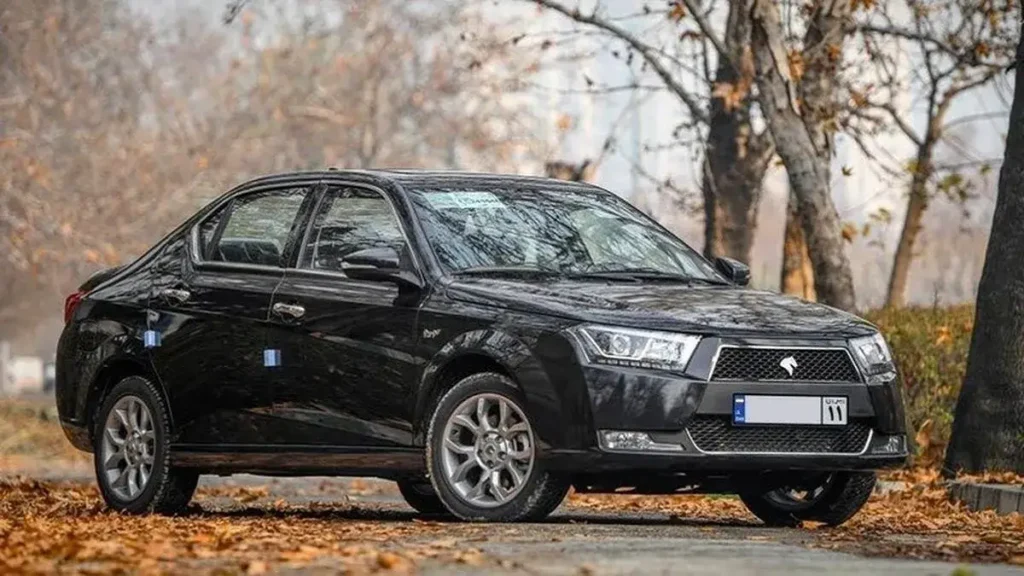
General Tips for Fueling in Iran
- Fuel Availability: Iran has an extensive network of fuel stations, but in more remote areas, fuel may not be available in large quantities, or certain types of fuel (like LPG or CNG) might be harder to find. It’s best to plan your fuel stops before your tank gets too low, especially if you’re traveling in rural areas.
- Always Have a Plan: As a tourist, it’s important to plan your fuel stops ahead of time, especially if you’re driving a vehicle that uses LPG or CNG. Make sure to know where the next fuel station is, and if you’re unsure, ask locals for guidance.
- Paying for Fuel: In most gas stations, you’ll pay for fuel at the pump using cash or local bank cards. Foreign credit cards may not work in most places, so it’s a good idea to have enough Iranian rials on hand to pay for fuel. Visit Our Iran car rental services provides cars with a Fuel Card, allowing you to drive like a local. Additionally, we offer travel debit cards for easy payments during your trip.
- Stay Safe: While fueling in Iran is generally safe, always stay alert, especially when driving in unfamiliar areas. Be careful when using a fuel station at night, as some stations may not be well-lit.
By following these practical tips and understanding how fueling works in Iran, you can ensure a smooth driving experience while exploring the country. Make sure to stay aware of the fuel types you need and plan your fuel stops accordingly, so you never find yourself stranded without fuel.
Car Services across the Country
In case you need help with your car, most cities have repair shops, and even small towns have basic mechanics. Roadside assistance is available in some regions, but not everywhere, so check with your rental company before starting your trip. Also, make sure the spare tire and tools are included in your rental car. Always fill up your tank before heading to remote areas, especially deserts or mountains where gas stations may be rare.
Best Navigation Apps to Use While Driving in Iran
Since Google Maps may not always work well in Iran, it’s better to use local navigation apps that are designed for Iranian roads. The two most popular ones are Neshan and Balad. These apps are free and give real-time traffic updates, directions, and voice guidance in Persian. If you don’t speak Persian, you can still use them by following the map visuals. To download and use them, you’ll need internet access, so make sure to get a local SIM card, such as the Visit Our Iran SIM card—as soon as you arrive.
Both apps help you avoid traffic, find gas stations, restaurants, and even parking spots. You can also download offline maps before your trip in case you lose internet connection. Just remember, some smaller villages or remote roads might not be fully covered in any map, so always check your route in advance. These apps are especially useful in big cities like Tehran where roads can be confusing.
Driving Yourself or Hiring a Local Driver: Which Is Better for You?
Driving in Iran gives you the freedom to explore places on your own schedule. You can stop in small towns, visit hidden attractions, and travel at your own pace. If you’re confident, have an International Driving Permit, and are comfortable with local traffic, self-driving can be a great experience. But you should also be prepared for the challenges, heavy traffic, unexpected road behavior, and language barriers when asking for directions.
If you prefer a more relaxed experience, hiring a local driver is a smart choice. Many travel companies and car rental agencies offer this service. A local driver knows the roads well, speaks Persian, and can help you navigate cities and rural areas with ease. It also saves you from dealing with traffic fines, car breakdowns, and the stress of driving in unfamiliar conditions. This option is often more comfortable for families, senior travelers, or anyone visiting Iran for the first time.
Summing Up
Driving in Iran can be a rewarding experience, especially if you’re looking to explore beyond the usual tourist spots. With its diverse landscapes and well-maintained highways, the country is ideal for a road trip, but it requires attention and caution, particularly in busy cities. By following traffic rules, being aware of local driving habits, and preparing ahead of time with the necessary documents, you can enjoy a safe and smooth journey. Whether you choose to drive yourself or hire a local driver, understanding the driving culture will help you navigate Iran’s roads with confidence.
To make your trip even more convenient, Visit Our Iran offers a range of services to ensure your journey goes smoothly. Our car rental service provides you with access to reliable vehicles, while our SIM card service keeps you connected throughout your travels. With debit card options for easy payments and hotel booking assistance, Visit Our Iran ensures you’re well-equipped for your adventure in Iran, from start to finish.
For more information and to book your services, visit our website or reach out to us directly. We’re here to help make your trip to Iran as smooth and enjoyable as possible.

